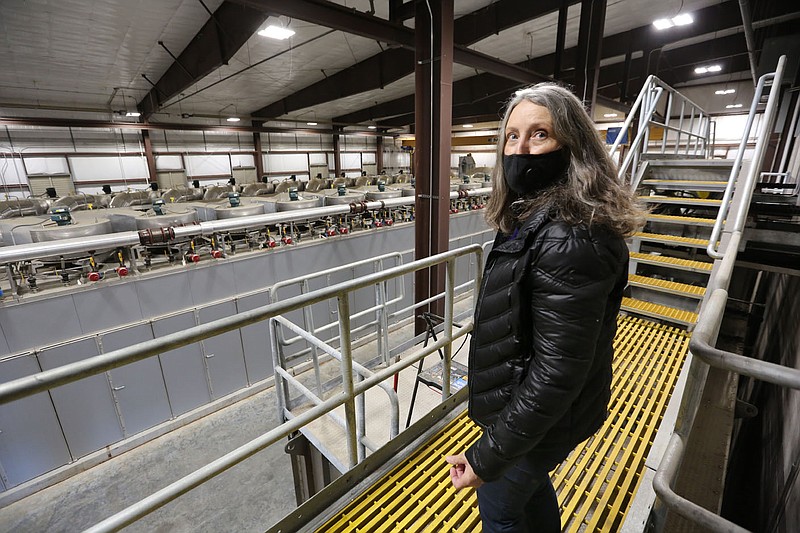SPRINGDALE -- Springdale Water Utilities watches opportunities for saving money and making money drip away as it waits for construction of its sludge dryer to close, according to the utilities' director.
The utilities' attorney recently sent a letter to Huber, the engineering and contracting firm for the $16 million project, reminding the company of its "contractual obligations," said Heath Ward, executive director of the utilities.
Huber, based in Germany, with offices in North Carolina, designed and served as the contractor for the project. Huber officials didn't respond to messages this week seeking comment.
The city plans to keep $1 million of its final payment until the repairs are made, he added. Ward said the items are like a "punch list" for the two-unit dryers at Springdale's wastewater treatment plant.
The two-unit dryers take the solids left over from treated wastewater. The process dries and compacts the solids, meaning less sludge to take to the landfill, which saves the utilities money, Ward said.
The sludge dryer does operate 90% of the time.
"But we want it 100% of the time," Ward said. The city began operating the dryer about a year ago.
Ward said the utilities spent about $20,000 last month taking the dried material to the landfill. It was paying about $70,000 a month to haul wet sludge to the landfill.
"So, we already have a savings," he said.
The utilities' 300,000 sewer customers might face higher rates without the savings, he said.
The Springdale utilities currently submit samples to a lab in New Jersey, which should lead to certification allowing the sale of the dried sludge. Ward said he has a local contract in place to sell the sludge when it becomes available.
The utility has signed a contract to have the dried sludge hauled out of the watershed for free, Ward said. The individual leases the utility's sludge truck and three trailers for a very nominal fee of about $100 a year, he added. The truck driver also holds responsibility for fuel, maintenance and insurance for the truck, which Ward said has no value.
"We have no use for the trucks and trailers anymore," Ward said. "We're happy to be out of the trucking business."
One item of concern is the dryer's heat exchangers, which help maintain a consistent temperature of the sludge during processing, Ward said. The exchangers are working, but must be turned off and cleaned frequently, he said. This requires more labor and management hours than the utilities planned.
Rogers Water Utilities also operates a sludge dryer and has budgeted $19 million for two new units, said Brent Dobler, superintendent.
An agreement between Springdale and Rogers officials will see Rogers' sludge processed for a fee in Springdale if construction of its new dryer requires shutting down the current dryer.
Springdale Water Utilities contracted with Huber in 2016, with construction beginning the next year.
"Overall, we're pleased with the dryer and Huber's performance," Ward said. "Just not the speed they are addressing the punch list."



